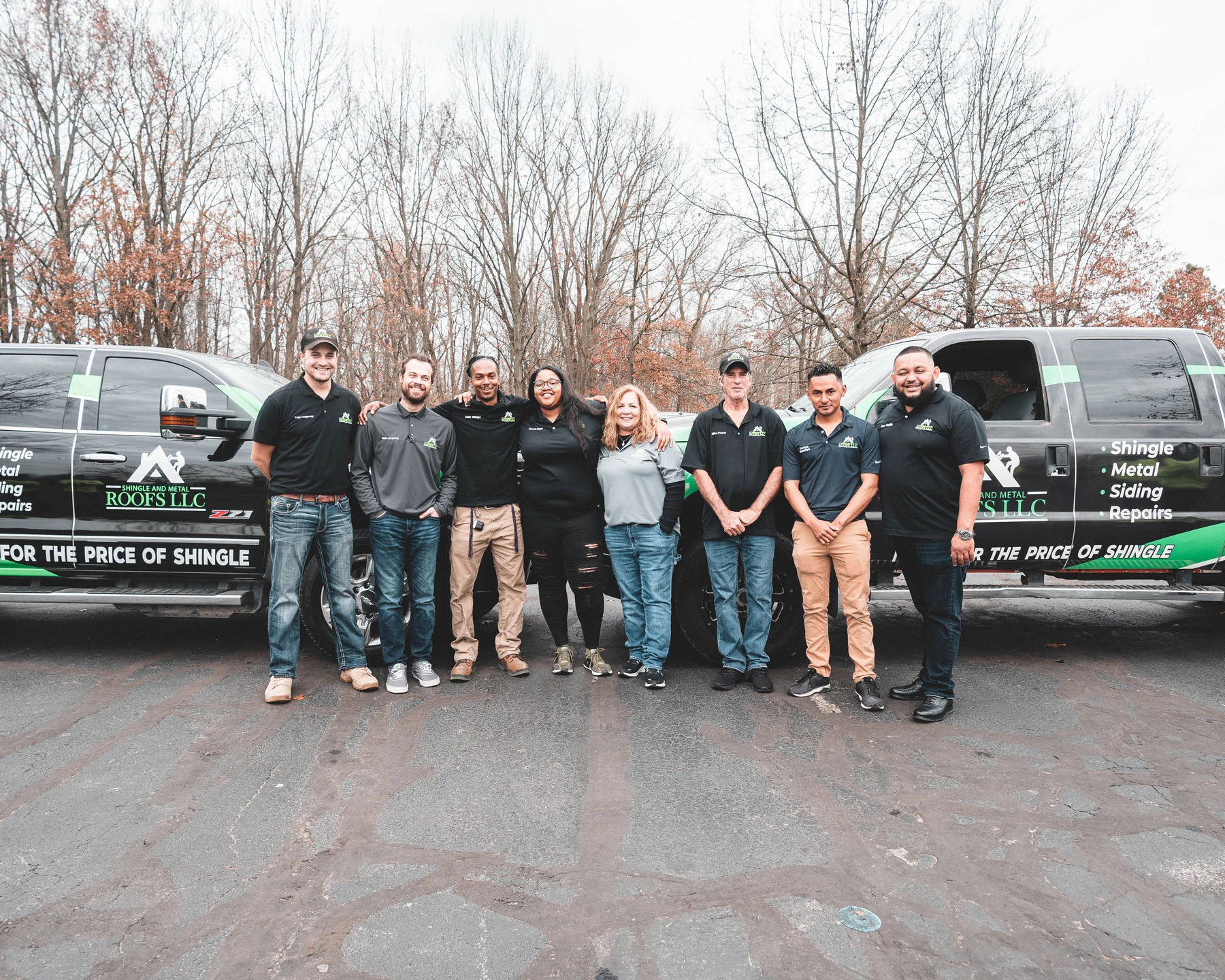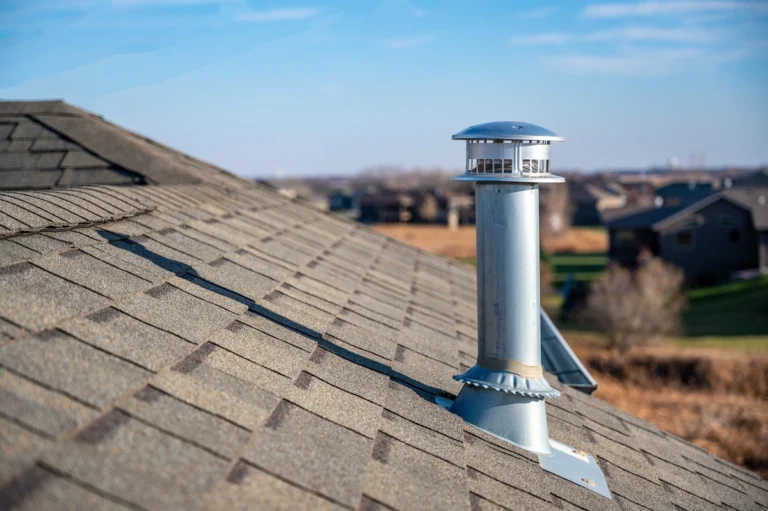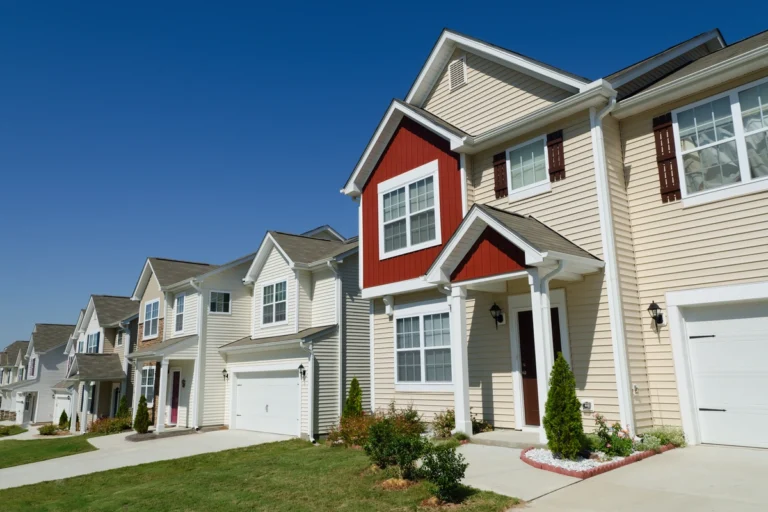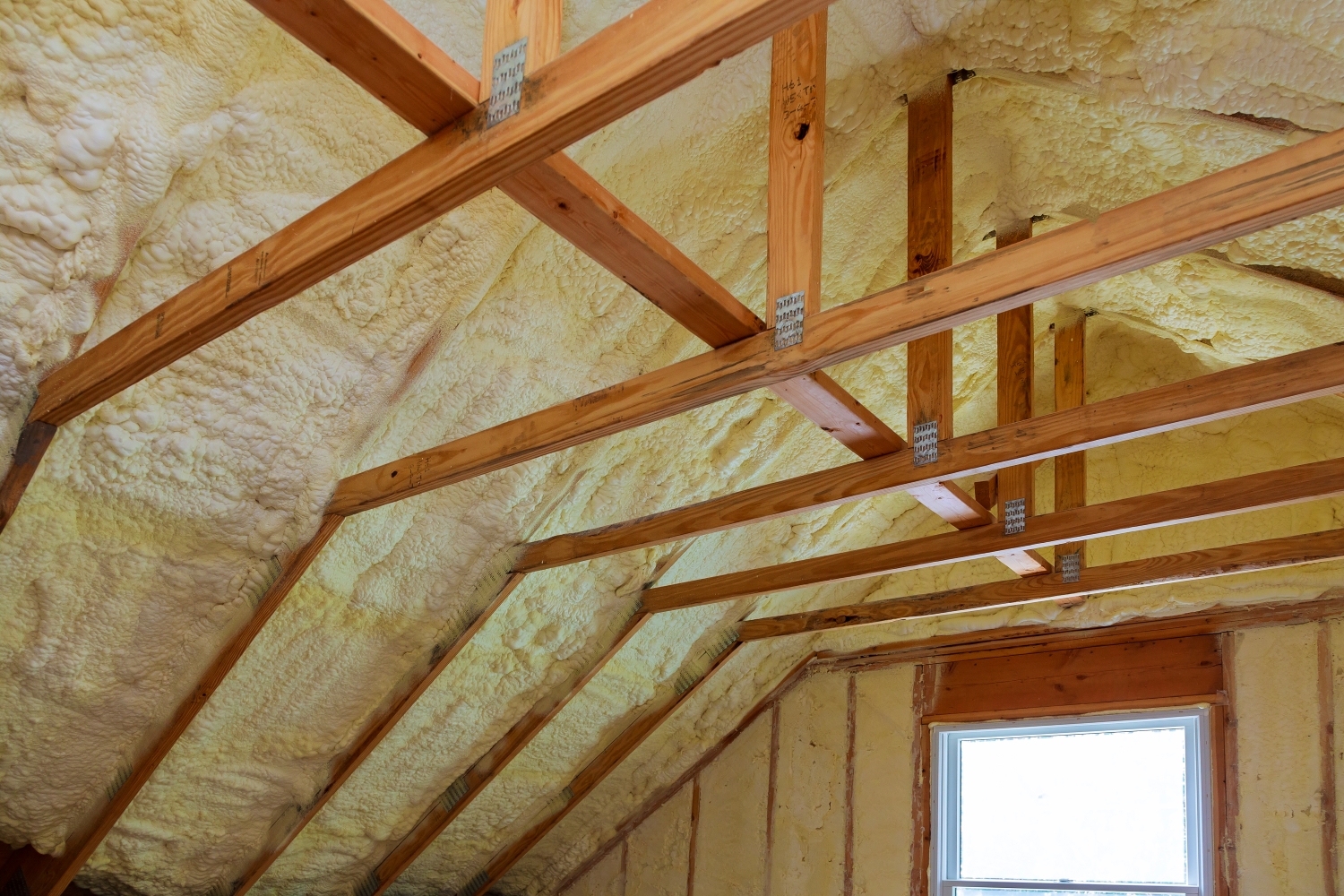
Attics play a crucial role in maintaining the structural integrity and energy efficiency of your home. Not only do they serve as storage spaces, but attics also provide a barrier to external elements, helping to regulate temperature and protect against moisture. Properly insulating your attic is one of the most effective ways to reduce energy costs and improve home comfort.
Attics are important to your home for a number of reasons, including:
- Energy Efficiency: A well-insulated attic prevents heat loss during winter and keeps your home cool in summer, significantly reducing your energy bills.
- Structural Integrity: Attics help in maintaining the overall structure by preventing moisture buildup that can lead to mold and rot.
- Comfort: Proper attic insulation ensures a consistent indoor temperature, enhancing your living comfort throughout the year.
The type of insulation you use in your attic has a huge impact on the health of your home. This guide will describe the most popular types of attic insulation in 2024 and what they cost.
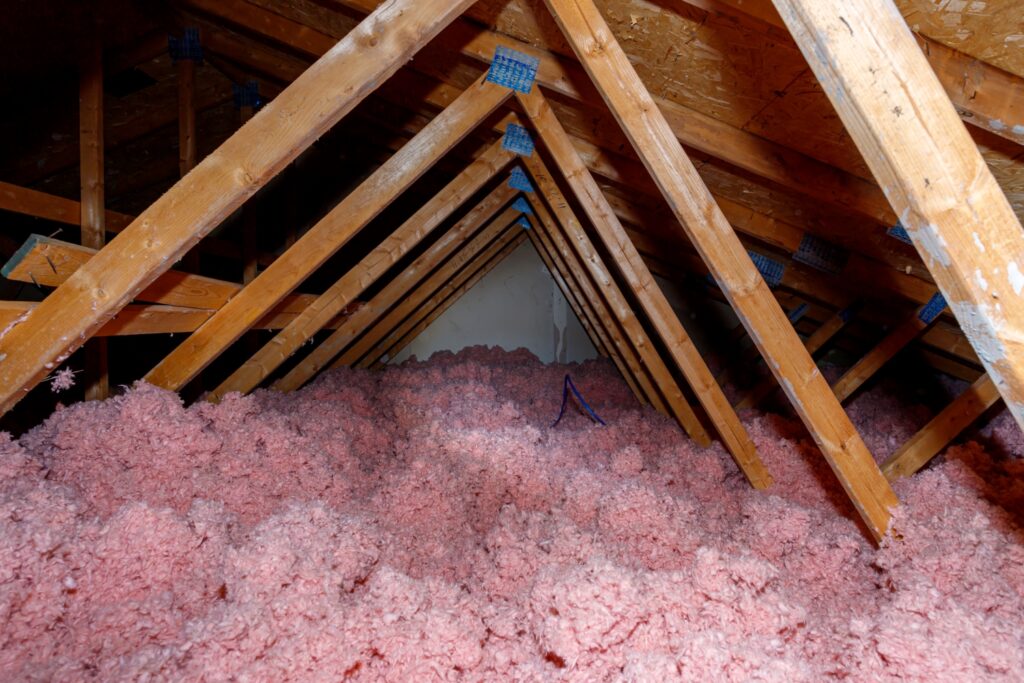
Fiberglass Insulation
Fiberglass insulation is one of the most commonly used types in homes across the United States. This insulation is made from fine glass fibers and is available in batts, rolls, and loose-fill forms.
- Installation Process: Fiberglass insulation batts or rolls are relatively easy to install, making them a popular choice for DIY enthusiasts. However, loose-fill fiberglass requires professional installation using specialized equipment to blow the material into the attic space thoroughly.
- Lifespan: With proper installation and care, fiberglass insulation can last between 20 to 30 years.
- Cost: The average price per square foot for fiberglass insulation in 2024 ranges from $0.40 to $1.50.
Spray Foam Insulation
Spray foam insulation is a versatile and highly efficient insulation material made from polyurethane. It expands upon application, filling gaps and creating an airtight seal.
- Installation Process: Installing spray foam insulation requires professional expertise. The foam is sprayed onto surfaces using specialized equipment, where it expands and hardens, creating a robust thermal barrier.
- Lifespan: Spray foam insulation can last for more than 30 years, providing long-term energy efficiency benefits.
- Cost: The average price per square foot for spray foam insulation in 2024 ranges from $1.50 to $3.00.
Cellulose Insulation
Cellulose insulation is an eco-friendly option made from recycled paper products treated with fire retardants. It is available in loose-fill form and can be blown into attic spaces.
- Installation Process: Professional installation is recommended for cellulose insulation. Using a blower machine, the material is evenly distributed across the attic, filling gaps and crevices.
- Lifespan: Cellulose insulation generally has a lifespan of 20 to 30 years, though it may settle over time and require topping up.
- Cost: The average price per square foot for cellulose insulation in 2024 ranges from $0.60 to $2.30.
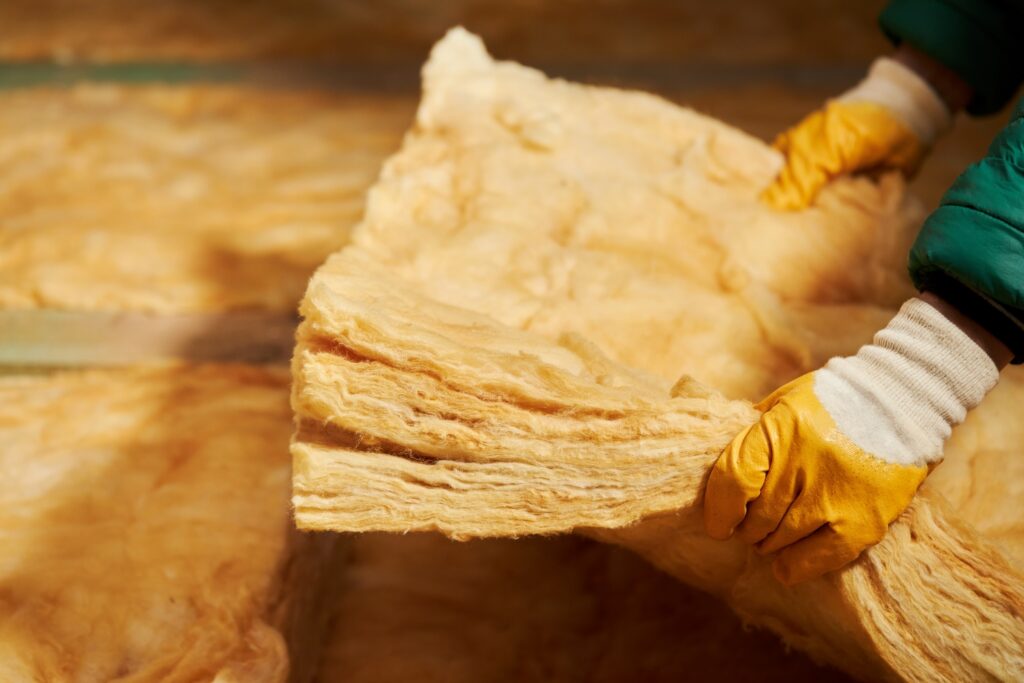
Mineral Wool Insulation
Mineral wool insulation, also known as rock wool, is made from natural minerals like basalt or diabase. It is available in batts and loose-fill forms.
- Installation Process: Mineral wool batts can be installed similarly to fiberglass batts, while loose-fill mineral wool requires professional installation using specialized blowing equipment.
- Lifespan: Mineral wool insulation can last for more than 30 years, offering excellent fire resistance and soundproofing capabilities.
- Cost: The average price per square foot for mineral wool insulation in 2024 ranges from $1.00 to $2.50.
Reflective or Radiant Barrier Insulation
Reflective or radiant barrier insulation is designed to reflect heat away from the attic space. It is typically made from aluminum foil and applied to sheets or rolls.
- Installation Process: Installation involves attaching the reflective barrier to the underside of the roof rafters. While some homeowners may choose to install it themselves, professional installation ensures optimal performance.
- Lifespan: Reflective insulation can last up to 20 years with proper installation and maintenance.
- Cost: The average price per square foot for reflective insulation in 2024 ranges from $0.30 to $1.50.
Foam Board Insulation
Foam board insulation comprises rigid panels made from polystyrene, polyisocyanurate, or polyurethane. It provides high R-values per inch of thickness.
- Installation Process: Foam board panels are cut to fit and installed between attic rafters or joists. They can be secured using adhesive or fasteners, but professional installation is recommended for a perfect fit.
- Lifespan: Foam board insulation can last for more than 30 years, depending on the material and installation quality.
- Cost: The average price per square foot for foam board insulation in 2024 ranges from $0.80 to $2.50.
Things to Keep in Mind
When planning your attic insulation project, here are several other considerations to take into account:
- Existing Insulation: If your attic already has insulation, assess its condition. Sometimes, adding new insulation on top of existing insulation can enhance its performance.
- R-Value: The R-value measures the insulation’s thermal resistance. Higher R-values indicate better insulation performance. Ensure you choose an insulation type with an appropriate R-value for your climate and home needs.
- Professional vs. DIY: While some insulation types are DIY-friendly, others require professional installation. Weigh the costs and benefits of both options to determine what’s best for your project.
- Moisture Control: Proper attic ventilation is crucial to prevent moisture buildup that can lead to mold and structural damage. Ensure your insulation project includes adequate ventilation solutions.
- Tax Credits and Rebates: Check for any available tax credits or rebates for energy-efficient home improvements. These incentives can offset the initial cost of your insulation project.
- Budget: Determine your budget for the insulation project. Keep in mind that while some insulation types may have lower upfront costs, they might not offer the same long-term savings and benefits as higher-priced options.
- Environmental Impact: If sustainability is important to you, consider eco-friendly insulation options like cellulose or mineral wool made from recycled materials. Their lower environmental impact can be an added benefit.
Replace your Insulation Today
Insulating your attic is a crucial step in maintaining your home’s energy efficiency and structural integrity. From fiberglass to foam board, various insulation types cater to different needs and budgets. Whether you’re a DIY enthusiast or prefer professional installation, understanding the costs and benefits of each insulation type will help you make an informed decision.
For all your roofing and insulation needs, reach out to Dreamworx Roofing. Our team of experts is ready to guide you through every step of your insulation project, ensuring your home remains comfortable and energy-efficient for years to come. Contact us today to get started!

